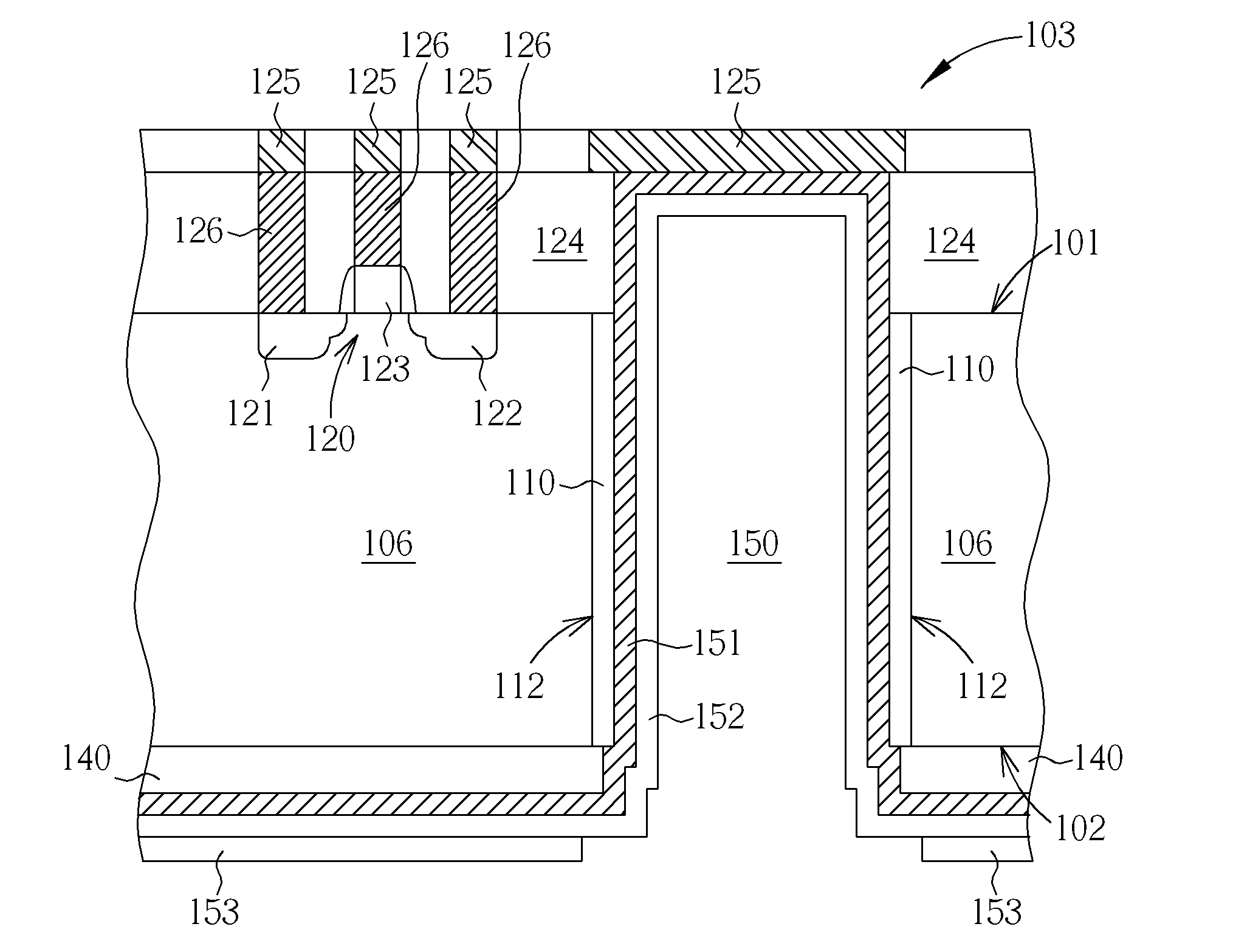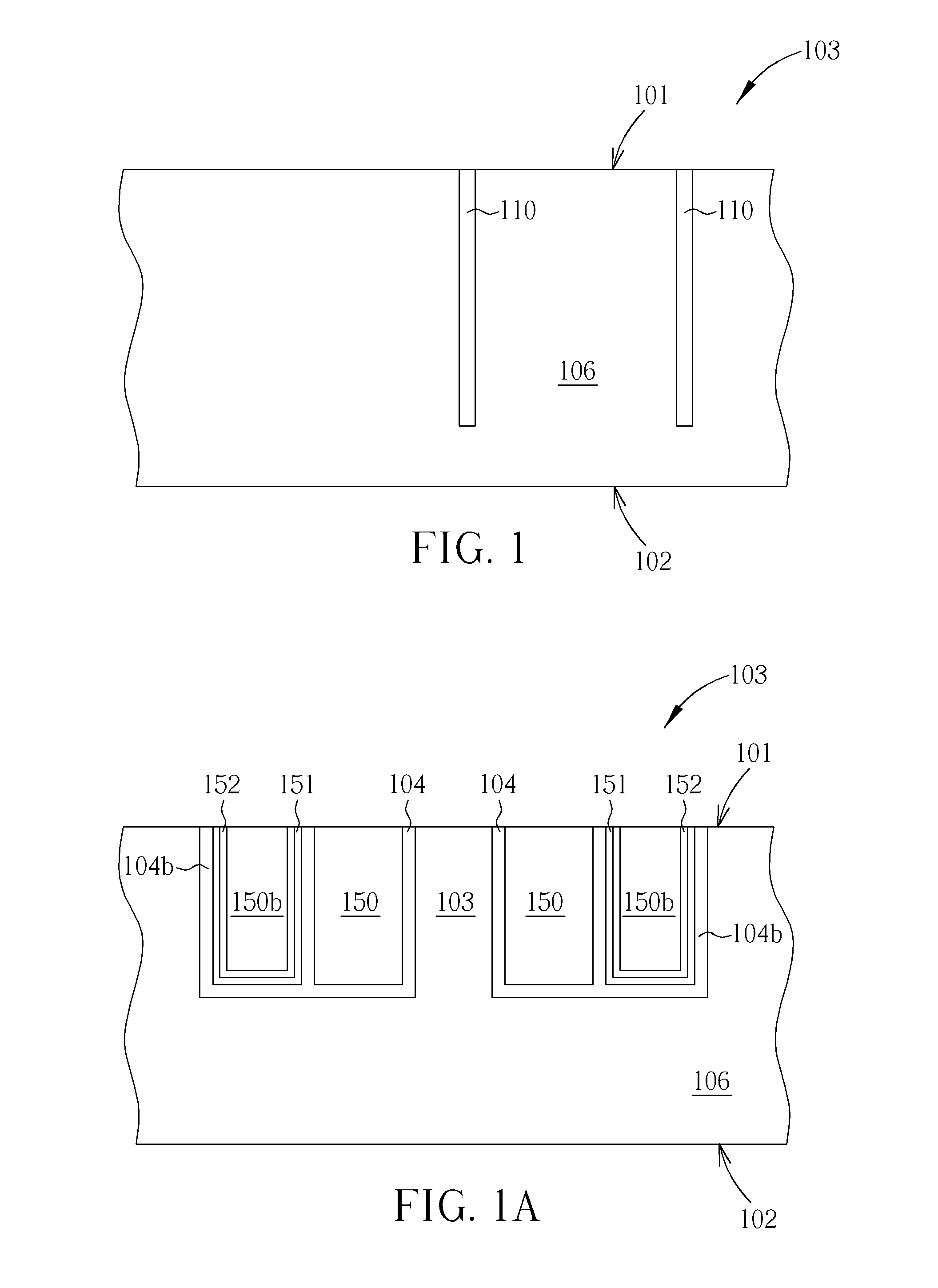TSV structure and method for forming the same
- Summary
- Abstract
- Description
- Claims
- Application Information
AI Technical Summary
Benefits of technology
Problems solved by technology
Method used
Image
Examples
first embodiment
[0020]Second, in a first embodiment, an annular dielectric layer 110 is formed in the wafer 103. The annular dielectric layer 110 may be formed along with the formation of the shallow trench isolation (not shown). For example, lithographic and etching steps may be used to form recesses (not shown) in the wafer 103 to respectively define the annular dielectric layer 110 and the shallow trench (not shown). The size of the openings on the reticle and etching recipes may be used to control the depth of the recesses and the shallow trenches. Preferably, the depth of the recesses should be deeper than that of the shallow trenches. Later, a dielectric material, such as silicon oxide, may be used to fill the recesses and the shallow trenches, followed by planarization to respectively obtain the annular dielectric layer 110 and the shallow trench isolation (not shown). Optionally, the ring thickness of the annular dielectric layer 110 may be 2 μm-3 μm.
second embodiment
[0021]Please refer to FIG. 1A, in a second embodiment a recess (not shown) is etched in the wafer 103 to accommodate the through via dielectric ring, a first conductive ring and a first dielectric ring which are formed in later steps. The recess (not shown) maybe formed along with the formation of the shallow trench isolation (not shown). After the recess (not shown) is formed, an isolation layer 104 is formed on the inner wall of the recess (not shown) and later a conductive material fills the recess (not shown) to form a conductive layer 150, such as by deposition to fill up the recess (not shown). After the isolation layer 104 and the conductive layer 150 are done, some of the substrate in the wafer 103 is disposed between the isolation layer 104 and the conductive layer 150.
[0022]Before the conductive layer 150 fills the recess (not shown), at least one of a barrier layer (not shown) and a seed layer (not shown) may be optionally formed on the inner wall of the isolation layer 1...
PUM
 Login to View More
Login to View More Abstract
Description
Claims
Application Information
 Login to View More
Login to View More - R&D
- Intellectual Property
- Life Sciences
- Materials
- Tech Scout
- Unparalleled Data Quality
- Higher Quality Content
- 60% Fewer Hallucinations
Browse by: Latest US Patents, China's latest patents, Technical Efficacy Thesaurus, Application Domain, Technology Topic, Popular Technical Reports.
© 2025 PatSnap. All rights reserved.Legal|Privacy policy|Modern Slavery Act Transparency Statement|Sitemap|About US| Contact US: help@patsnap.com



